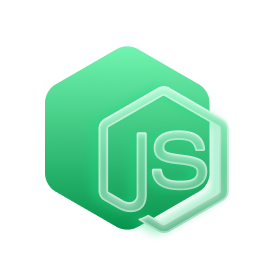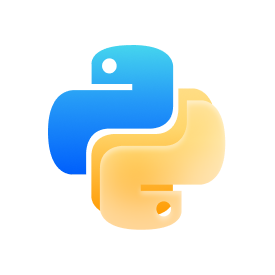- برگشت به خانه
- درباره ذخیرهسازی ابری
- راهاندازی سریع!
- آپلود فایل
- دانلود فایل
- مشاهده فایل
- اشتراکگذاری فایل
- حذف فایل
- تغییر سطح دسترسی
- ایجاد کلید
- ساخت کلید جدید
- ویرایش کلید
- حذف کلید
- انتقال فایل از باکت به باکت دیگر
- تهیه فایلپشتیبان با rclone
- تهیه فایلپشتیبان با S3 Browser
- دانلود مستقیم فایل
- NodeJS

- NextJS

- Laravel

- PHP

- Python

- Django

- Flask

- NET.

- Go

- Imgproxy

- Strapi

- جزئیات فضای ذخیرهسازی ابری
- اتصال دامنه به باکت
اتصال به فضای ذخیرهسازی ابری در برنامههای NET.
پروژه و کدهای مورد استفاده در ویدیوی فوق در اینجا قابل مشاهده و دسترسی هستند.
برای استفاده از Object Storage در برنامههای NET. میتوانید از پکیج AWSSDK.S3 استفاده کنید که بایستی با دستور زیر، آن را در پروژه خود، نصب کنید:
dotnet add package AWSSDK.S3پس از آن، کافیست تا طبق مستندات ایجاد کلید، یک کلید جدید برای باکت خود بسازید. اطلاعات مربوط به ENDPOINT و نام باکت نیز در صفحه تنظیمات، در بخش دسترسی با SDK، برای شما قرار گرفته است. در نهایت نیز، بایستی اطلاعات مربوط به Object Storage خود را به متغیرهای محیطی برنامه خود، اضافه کنید؛ به عنوان مثال:
LIARA_ENDPOINT_URL: https://storage.iran.liara.space
LIARA_ACCESS_KEY: nieiou08cnbod58p
LIARA_SECRET_KEY: 20b71a4c-1168-4945-8ed3-4724dbf9e997
BUCKET_NAME: my-bucket-nameتمامی کارها انجام شده است و میتوانید از Object Storage در برنامه خود، استفاده کنید؛ در ادامه، مثالهایی از نحوه مدیریت فایلها در باکت قرار گرفته است که میتوانید از آنها استفاده کنید.
نمونه کد آپلود فایل
[HttpPost]
public async Task<IActionResult> UploadFile(IFormFile file)
{
if (file != null && file.Length > 0)
{
using var stream = file.OpenReadStream();
await UploadFileAsync(file.FileName, stream);
}
return RedirectToAction("Index");
}
private async Task UploadFileAsync(string fileName, Stream fileStream)
{
var putRequest = new PutObjectRequest
{
BucketName = _bucketName,
Key = fileName,
InputStream = fileStream
};
await _s3Client.PutObjectAsync(putRequest);
}نمونه کد حذف فایل
[HttpPost]
public async Task<IActionResult> DeleteFile(string fileName)
{
await DeleteFileAsync(fileName);
return RedirectToAction("Index");
}
private async Task DeleteFileAsync(string fileName)
{
var deleteRequest = new DeleteObjectRequest
{
BucketName = _bucketName,
Key = fileName
};
await _s3Client.DeleteObjectAsync(deleteRequest);
}نمونه کد ساخت لینک موقت دانلود فایل
public async Task<IActionResult> GeneratePresignedUrl(string fileName)
{
var url = await GeneratePresignedUrlAsync(fileName);
ViewBag.PresignedUrl = url;
return View("Index", await ListFilesAsync());
}
private async Task<string> GeneratePresignedUrlAsync(string fileName)
{
var request = new GetPreSignedUrlRequest
{
BucketName = _bucketName,
Key = fileName,
Expires = System.DateTime.UtcNow.AddHours(1) // URL valid for 1 hour
};
return _s3Client.GetPreSignedURL(request);
}نمونه کد دریافت لینک دائم فایل
public async Task<IActionResult> GetPermanentUrl(string fileName)
{
var url = await GetPermanentUrlAsync(fileName);
ViewBag.PermanentUrl = url;
return View("Index", await ListFilesAsync());
}
private async Task<string> GetPermanentUrlAsync(string fileName)
{
return $"https://{_bucketName}.{new Uri(_s3Client.Config.ServiceURL).Host}/{fileName}";
}نمونه کد برای لیست کردن فایلها
public async Task<IActionResult> Index()
{
var files = await ListFilesAsync();
return View(files); // Pass the list of files as the Model
}
private async Task<List<string>> ListFilesAsync()
{
var listRequest = new ListObjectsV2Request
{
BucketName = _bucketName
};
var response = await _s3Client.ListObjectsV2Async(listRequest);
var files = new List<string>();
foreach (var entry in response.S3Objects)
{
files.Add(entry.Key);
}
return files;
}نمونه کد کامل شامل تمامی قابلیتها
در ابتدا، متغیرهای خود را در appsettings.json قرار دهید:
{
"Logging": {
"LogLevel": {
"Default": "Information",
"Microsoft.AspNetCore": "Warning"
}
},
"AllowedHosts": "*",
"LIARA_ENDPOINT_URL": "https://storage.iran.liara.space",
"LIARA_ACCESS_KEY": "nieiou08cnbod58p",
"LIARA_SECRET_KEY": "20b71a4c-1168-4945-8ed3-4724dbf9e997",
"BUCKET_NAME": "my-bucket-name"
}
در ادامه، در فایل Program.cs، کد زیر را قرار دهید:
using Amazon.Runtime;
using Amazon.S3;
var builder = WebApplication.CreateBuilder(args);
// Load environment variables from appsettings.json or .env
builder.Configuration.AddJsonFile("appsettings.json", optional: true, reloadOnChange: true);
builder.Configuration.AddEnvironmentVariables();
// Add services to the container.
builder.Services.AddControllersWithViews();
// Configure AWS S3 client
builder.Services.AddSingleton<IAmazonS3>(sp =>
{
var config = new AmazonS3Config
{
ServiceURL = builder.Configuration["LIARA_ENDPOINT_URL"],
ForcePathStyle = true // Required for some S3-compatible services
};
var credentials = new BasicAWSCredentials(
builder.Configuration["LIARA_ACCESS_KEY"],
builder.Configuration["LIARA_SECRET_KEY"]
);
return new AmazonS3Client(credentials, config);
});
var app = builder.Build();
// Configure the HTTP request pipeline.
if (!app.Environment.IsDevelopment())
{
app.UseExceptionHandler("/Home/Error");
app.UseHsts();
}
app.UseHttpsRedirection();
app.UseStaticFiles();
app.UseRouting();
app.UseAuthorization();
app.MapControllerRoute(
name: "default",
pattern: "{controller=Home}/{action=Index}/{id?}");
app.Run();در ادامه، در مسیر Controllers/HomeController.cs قطعه کد زیر را قرار دهید:
using Amazon.S3;
using Amazon.S3.Model;
using Microsoft.AspNetCore.Mvc;
public class HomeController : Controller
{
private readonly IAmazonS3 _s3Client;
private readonly string _bucketName;
public HomeController(IAmazonS3 s3Client)
{
_s3Client = s3Client;
_bucketName = "bucketoo"; // Replace with your bucket name
}
public async Task<IActionResult> Index()
{
var files = await ListFilesAsync();
return View(files); // Pass the list of files as the Model
}
[HttpPost]
public async Task<IActionResult> UploadFile(IFormFile file)
{
if (file != null && file.Length > 0)
{
using var stream = file.OpenReadStream();
await UploadFileAsync(file.FileName, stream);
}
return RedirectToAction("Index");
}
[HttpPost]
public async Task<IActionResult> DeleteFile(string fileName)
{
await DeleteFileAsync(fileName);
return RedirectToAction("Index");
}
public async Task<IActionResult> GeneratePresignedUrl(string fileName)
{
var url = await GeneratePresignedUrlAsync(fileName);
ViewBag.PresignedUrl = url;
return View("Index", await ListFilesAsync());
}
public async Task<IActionResult> GetPermanentUrl(string fileName)
{
var url = $"https://{_bucketName}.{new Uri(_s3Client.Config.ServiceURL).Host}/{fileName}";
ViewBag.PermanentUrl = url;
return View("Index", await ListFilesAsync());
}
private async Task<List<string>> ListFilesAsync()
{
var listRequest = new ListObjectsV2Request
{
BucketName = _bucketName
};
var response = await _s3Client.ListObjectsV2Async(listRequest);
var files = new List<string>();
foreach (var entry in response.S3Objects)
{
files.Add(entry.Key);
}
return files;
}
private async Task UploadFileAsync(string fileName, Stream fileStream)
{
var putRequest = new PutObjectRequest
{
BucketName = _bucketName,
Key = fileName,
InputStream = fileStream
};
await _s3Client.PutObjectAsync(putRequest);
}
private async Task DeleteFileAsync(string fileName)
{
var deleteRequest = new DeleteObjectRequest
{
BucketName = _bucketName,
Key = fileName
};
await _s3Client.DeleteObjectAsync(deleteRequest);
}
private Task<string> GeneratePresignedUrlAsync(string fileName)
{
var request = new GetPreSignedUrlRequest
{
BucketName = _bucketName,
Key = fileName,
Expires = System.DateTime.UtcNow.AddHours(1) // URL valid for 1 hour
};
return Task.FromResult(_s3Client.GetPreSignedURL(request));
}
}سپس در مسیر Views/Home/Index.cshtml کد زیر را قرار دهید:
public class HomeController : Controller
{
private readonly IAmazonS3 _s3Client;
private readonly string _bucketName;
public HomeController(IAmazonS3 s3Client)
{
_s3Client = s3Client;
_bucketName = "bucketoo"; // Replace with your bucket name
}
public async Task<IActionResult> Index()
{
var files = await ListFilesAsync();
return View(files); // Pass the list of files as the Model
}
[HttpPost]
public async Task<IActionResult> UploadFile(IFormFile file)
{
if (file != null && file.Length > 0)
{
using var stream = file.OpenReadStream();
await UploadFileAsync(file.FileName, stream);
}
return RedirectToAction("Index");
}
[HttpPost]
public async Task<IActionResult> DeleteFile(string fileName)
{
await DeleteFileAsync(fileName);
return RedirectToAction("Index");
}
public async Task<IActionResult> GeneratePresignedUrl(string fileName)
{
var url = await GeneratePresignedUrlAsync(fileName);
ViewBag.PresignedUrl = url;
return View("Index", await ListFilesAsync());
}
public async Task<IActionResult> GetPermanentUrl(string fileName)
{
var url = $"https://{_bucketName}.{new Uri(_s3Client.Config.ServiceURL).Host}/{fileName}";
ViewBag.PermanentUrl = url;
return View("Index", await ListFilesAsync());
}
private async Task<List<string>> ListFilesAsync()
{
var listRequest = new ListObjectsV2Request
{
BucketName = _bucketName
};
var response = await _s3Client.ListObjectsV2Async(listRequest);
var files = new List<string>();
foreach (var entry in response.S3Objects)
{
files.Add(entry.Key);
}
return files;
}
private async Task UploadFileAsync(string fileName, Stream fileStream)
{
var putRequest = new PutObjectRequest
{
BucketName = _bucketName,
Key = fileName,
InputStream = fileStream
};
await _s3Client.PutObjectAsync(putRequest);
}
private async Task DeleteFileAsync(string fileName)
{
var deleteRequest = new DeleteObjectRequest
{
BucketName = _bucketName,
Key = fileName
};
await _s3Client.DeleteObjectAsync(deleteRequest);
}
private async Task<string> GeneratePresignedUrlAsync(string fileName)
{
var request = new GetPreSignedUrlRequest
{
BucketName = _bucketName,
Key = fileName,
Expires = System.DateTime.UtcNow.AddHours(1) // URL valid for 1 hour
};
return _s3Client.GetPreSignedURL(request);
}
}تمامی کارها انجام شده است و میتوانید Object Storage خود را، مدیریت کنید.